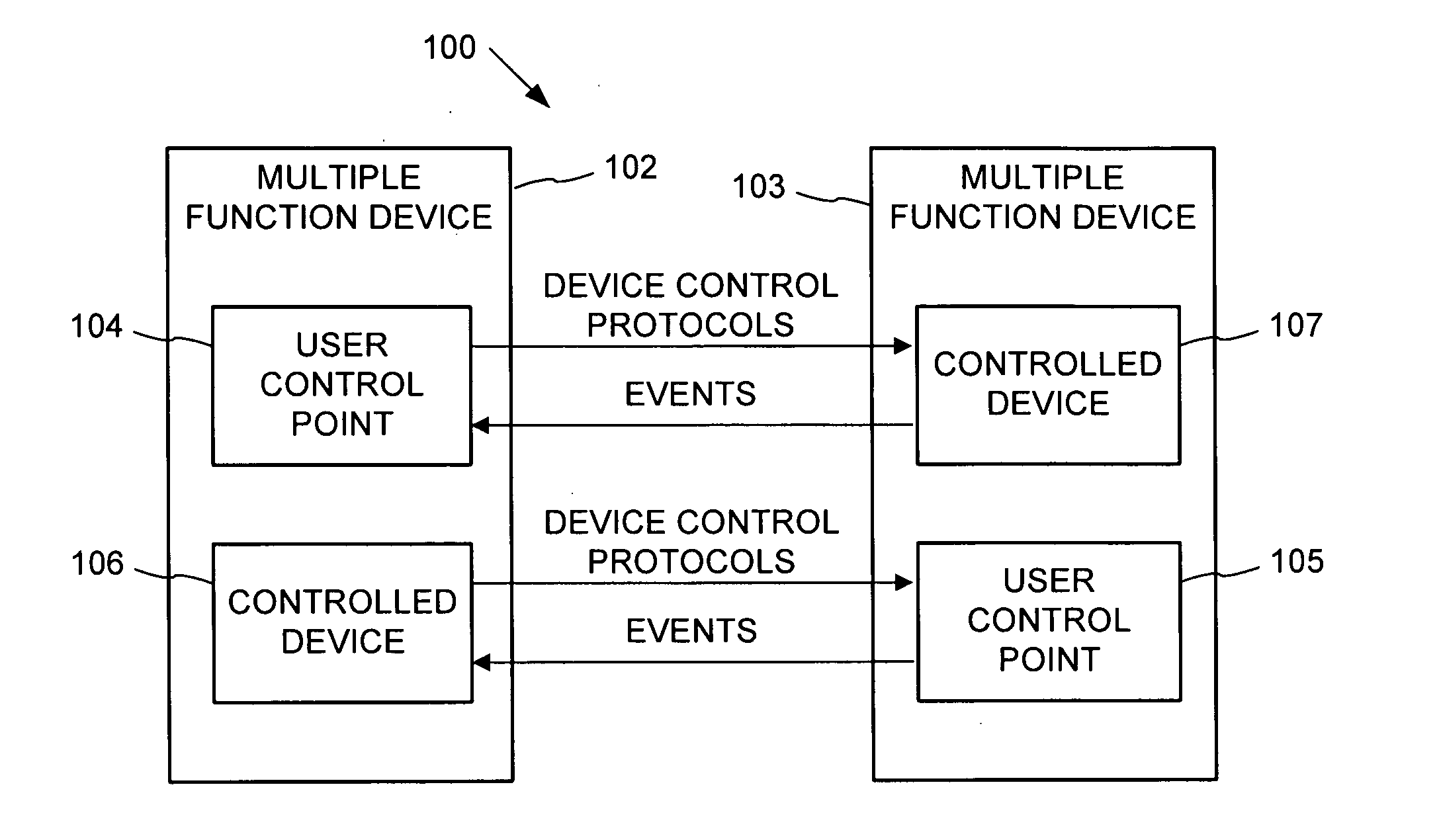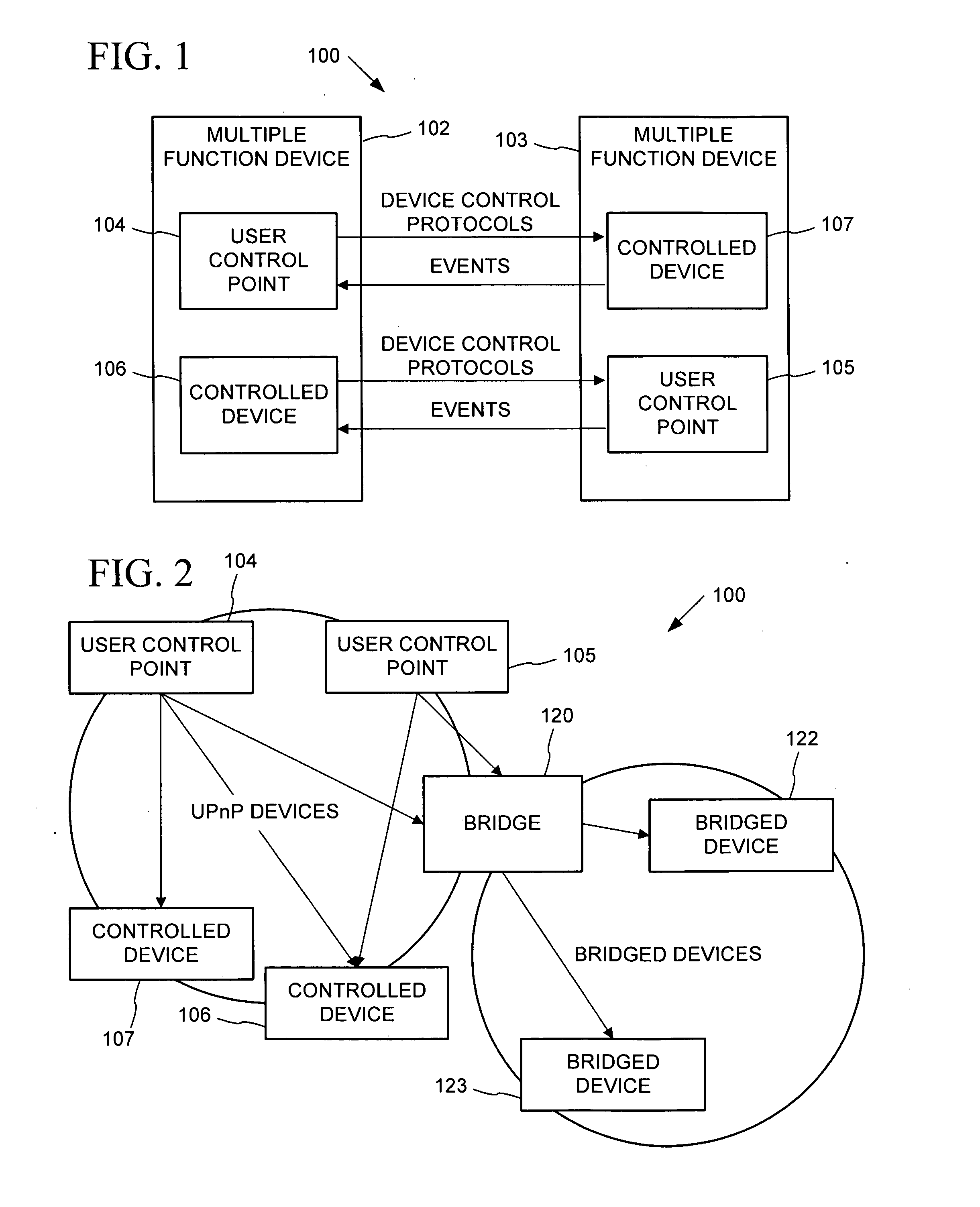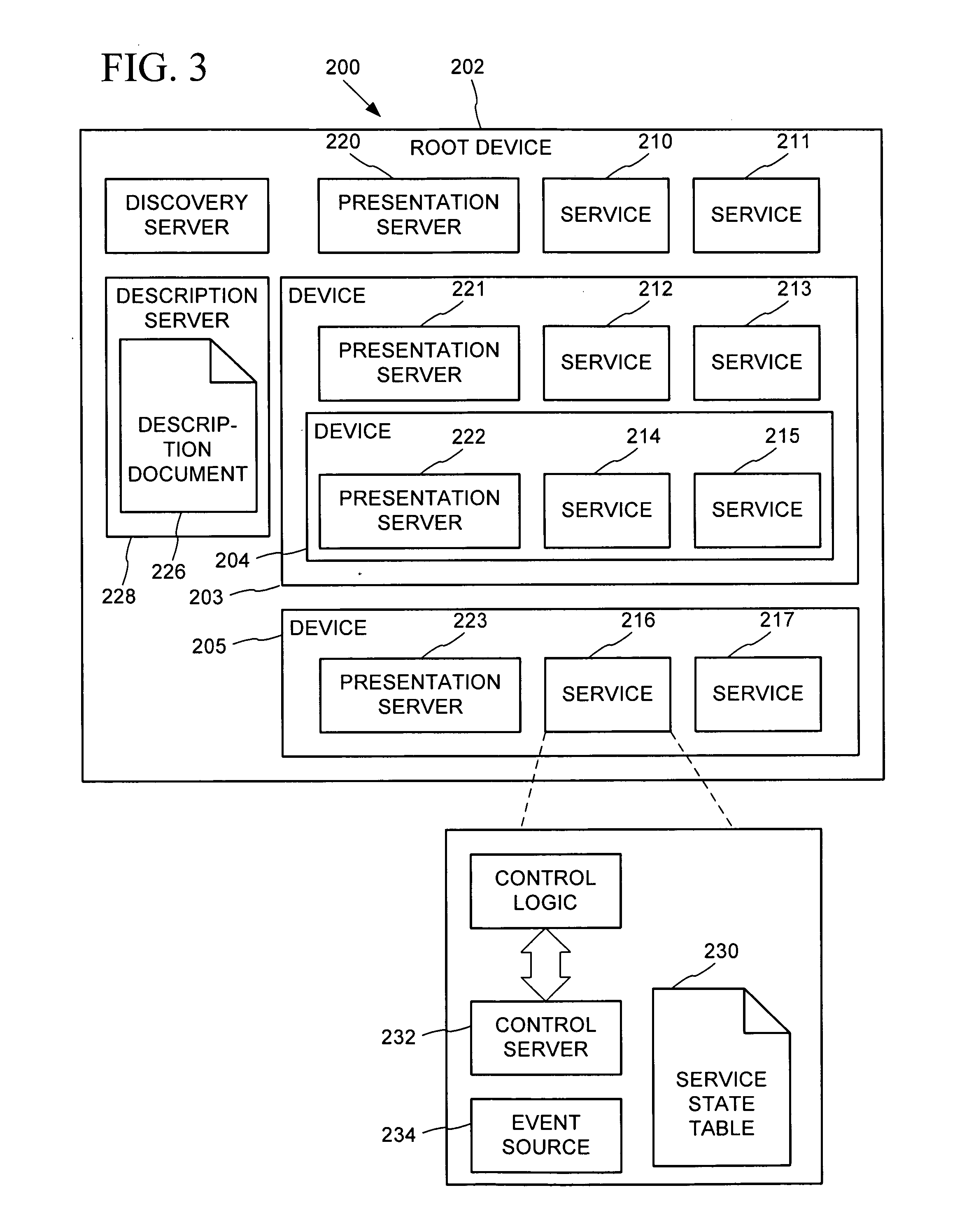XML-based template language for devices and services
a template language and device technology, applied in the field of dynamic connectivity, can solve the problems of inability to use network-capable computing devices in many usage scenarios, inability to actively manage networks by experienced administrators, and inability to use network-capable computing devices. to achieve the effect of reducing the cost of connectivity solutions, and reducing the cost of computing and networking technologies
- Summary
- Abstract
- Description
- Claims
- Application Information
AI Technical Summary
Benefits of technology
Problems solved by technology
Method used
Image
Examples
example
FIGS. 45-47 depict an exemplary contract for interacting with a stock quote Service.
FIGS. 48-51 depict an XML schema for defining Contracts.
Having described and illustrated the principles of our invention with reference to an illustrated embodiment, it will be recognized that the illustrated embodiment can be modified in arrangement and detail without departing from such principles. It should be understood that the programs, processes, or methods described herein are not related or limited to any particular type of computer apparatus, unless indicated otherwise. Various types of general purpose or specialized computer apparatus may be used with or perform operations in accordance with the teachings described herein. Elements of the illustrated embodiment shown in software may be implemented in hardware and vice versa.
In view of the many possible embodiments to which the principles of our invention may be applied, it should be recognized that the detailed embodiments are illustr...
PUM
 Login to View More
Login to View More Abstract
Description
Claims
Application Information
 Login to View More
Login to View More - R&D
- Intellectual Property
- Life Sciences
- Materials
- Tech Scout
- Unparalleled Data Quality
- Higher Quality Content
- 60% Fewer Hallucinations
Browse by: Latest US Patents, China's latest patents, Technical Efficacy Thesaurus, Application Domain, Technology Topic, Popular Technical Reports.
© 2025 PatSnap. All rights reserved.Legal|Privacy policy|Modern Slavery Act Transparency Statement|Sitemap|About US| Contact US: help@patsnap.com



